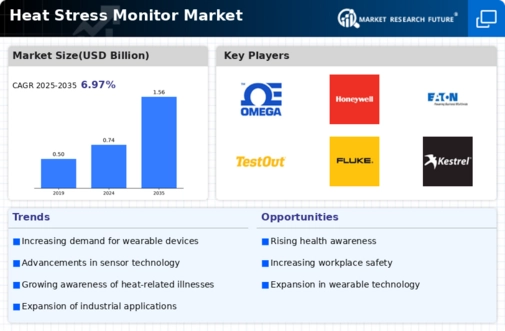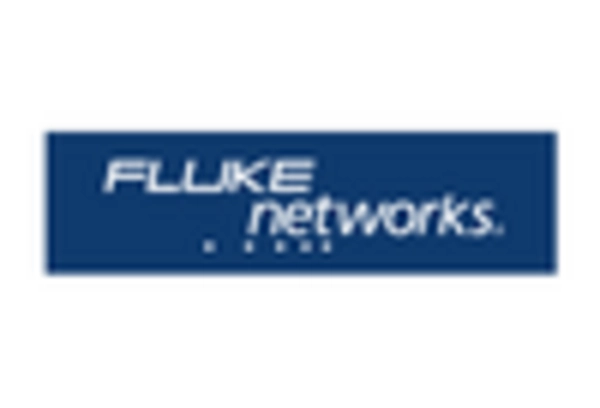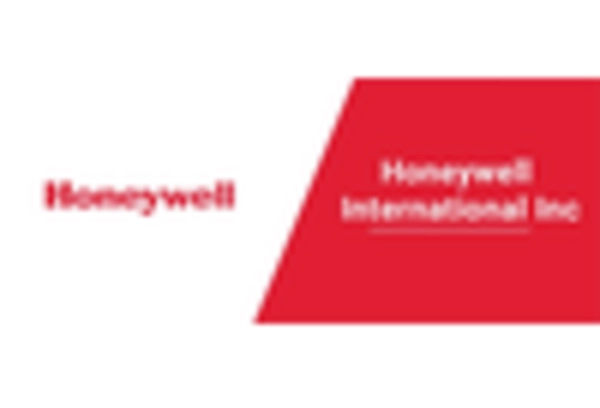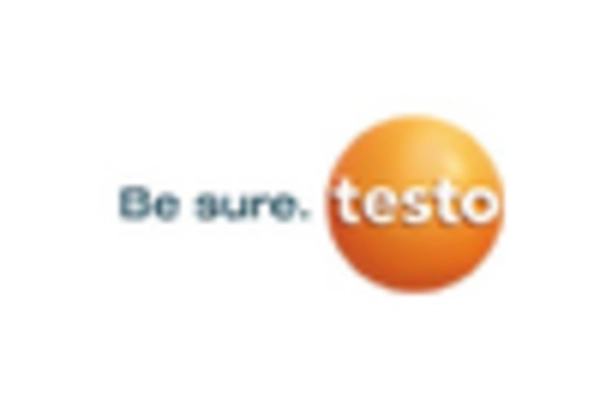Increased Workplace Safety Regulations
The Heat Stress Monitor Market is experiencing a surge in demand due to heightened workplace safety regulations. Governments and regulatory bodies are increasingly mandating the use of monitoring devices to ensure employee safety in high-temperature environments. This regulatory focus is particularly evident in sectors such as construction, manufacturing, and agriculture, where heat stress poses significant health risks. As a result, companies are investing in heat stress monitoring solutions to comply with these regulations, thereby driving market growth. The implementation of these regulations is expected to create a robust market environment, with projections indicating a compound annual growth rate of over 8% in the coming years. This trend underscores the importance of proactive measures in safeguarding worker health and well-being, further solidifying the role of heat stress monitors in various industries.
Rising Adoption of Wearable Technology
The rising adoption of wearable technology is significantly impacting the Heat Stress Monitor Market. As consumers and organizations increasingly embrace wearable devices for health monitoring, the demand for heat stress monitors is expected to rise correspondingly. Wearable technology offers the advantage of continuous monitoring, allowing for real-time data collection and analysis. This capability is particularly valuable in environments where heat stress is a concern, as it enables timely interventions to prevent heat-related illnesses. The market for wearable health devices is projected to grow at a rate of approximately 15% annually, driven by advancements in technology and increasing consumer awareness. This trend suggests that the integration of heat stress monitoring features into wearable devices could become a standard offering, further propelling the growth of the heat stress monitor market.
Growing Awareness of Occupational Health Risks
The Heat Stress Monitor Market is significantly influenced by the increasing awareness of occupational health risks associated with heat exposure. As organizations recognize the detrimental effects of heat stress on employee health and productivity, there is a growing emphasis on preventive measures. This awareness is prompting companies to invest in heat stress monitoring solutions to mitigate risks and enhance employee well-being. Studies indicate that heat-related illnesses can lead to substantial economic losses due to decreased productivity and increased healthcare costs. Consequently, businesses are prioritizing the implementation of heat stress monitors as part of their health and safety programs. This trend is expected to drive market growth, with estimates suggesting a potential increase in market size by over 15% in the next few years as more organizations adopt these essential monitoring tools.
Technological Innovations in Monitoring Devices
Technological advancements are playing a pivotal role in shaping the Heat Stress Monitor Market. Innovations in sensor technology, data analytics, and wearable devices are enhancing the accuracy and efficiency of heat stress monitoring solutions. For instance, the integration of real-time data transmission capabilities allows for immediate alerts and responses to heat stress conditions, thereby improving workplace safety. The market is witnessing the emergence of smart wearables that not only monitor temperature but also assess humidity and other environmental factors. This multifaceted approach to monitoring is likely to attract a broader range of industries, including sports and outdoor activities, where heat stress is a concern. As these technologies continue to evolve, the market is expected to expand, with a projected growth rate of approximately 10% annually over the next five years.
Expansion of Industrial and Construction Sectors
The expansion of industrial and construction sectors is a key driver for the Heat Stress Monitor Market. As these sectors continue to grow, the demand for effective heat stress management solutions is becoming increasingly critical. High temperatures in construction sites and manufacturing facilities can lead to serious health issues for workers, necessitating the use of heat stress monitors. The construction industry, in particular, is projected to witness significant growth, with investments in infrastructure development and urbanization initiatives. This growth is likely to result in a heightened need for monitoring devices to ensure worker safety in extreme conditions. Market analysts predict that the heat stress monitor segment could see a growth rate of around 12% as these industries prioritize health and safety measures to protect their workforce.

















Leave a Comment